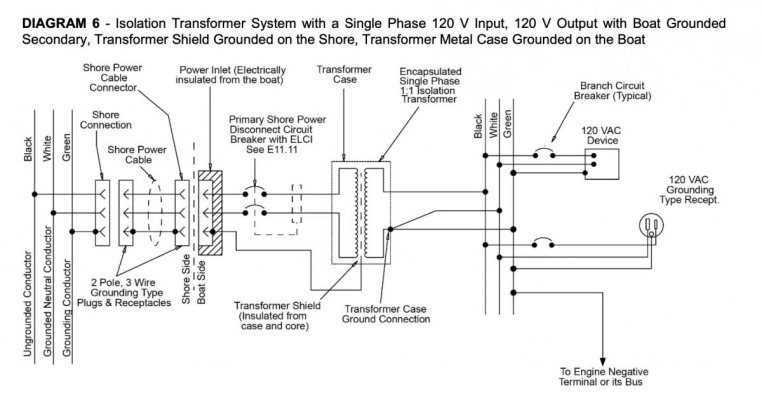davidla
Veteran Member
- Joined
- Jul 9, 2023
- Messages
- 55
- Vessel Name
- Shady Lady
- Vessel Make
- Main ship Trawler 400
Hi
This question is more for those using the Mainship in locations such as Australia and Europe and pertains to the Mainship 400 and 240 volt use of the installed Charles Industries transformer.
I am wondering if anyone has reversed the input and output in these devices to create a proper isolation transformer in the 2 wire (live and neutral) 240volt scenario?
Currently both my safety ground for fwd and aft shore supply are connected to boat ground and there is no galvanic isolator
 .
.
I figure if you reverse them as is done in the US to boost 208v dock supplies, you can then ground the shore neutral to shore ground and the case. At the same time you can ground the boat ground to the shield and jumper a neutral.
Thoughts please.
This question is more for those using the Mainship in locations such as Australia and Europe and pertains to the Mainship 400 and 240 volt use of the installed Charles Industries transformer.
I am wondering if anyone has reversed the input and output in these devices to create a proper isolation transformer in the 2 wire (live and neutral) 240volt scenario?
Currently both my safety ground for fwd and aft shore supply are connected to boat ground and there is no galvanic isolator

 .
. I figure if you reverse them as is done in the US to boost 208v dock supplies, you can then ground the shore neutral to shore ground and the case. At the same time you can ground the boat ground to the shield and jumper a neutral.
Thoughts please.


